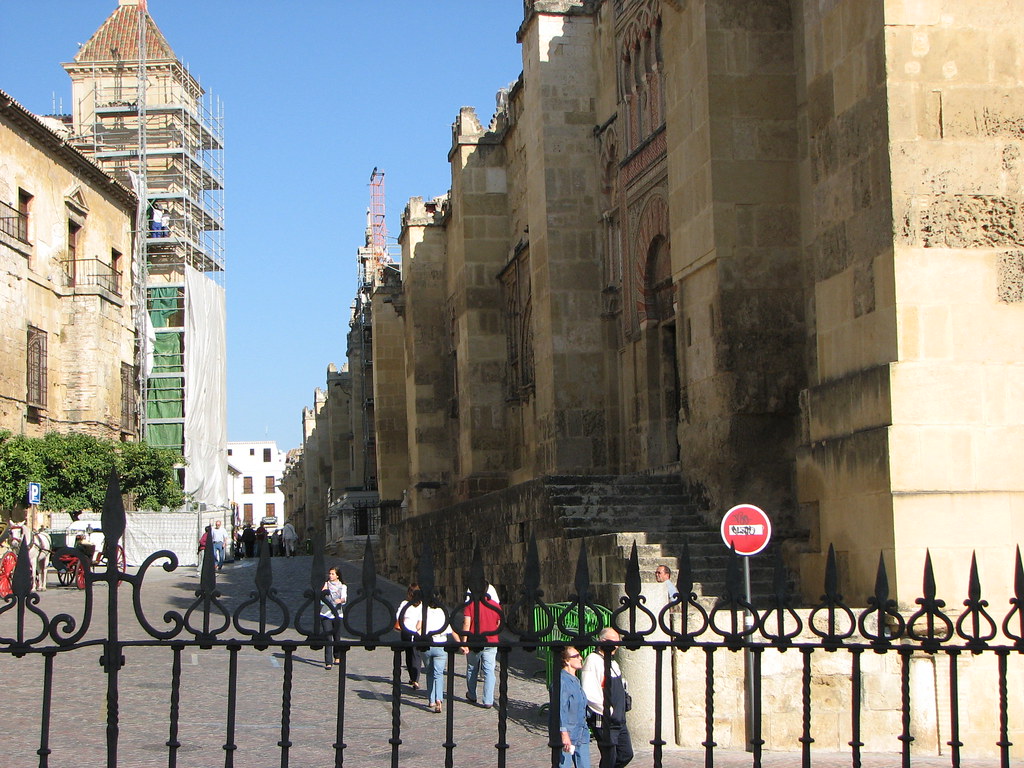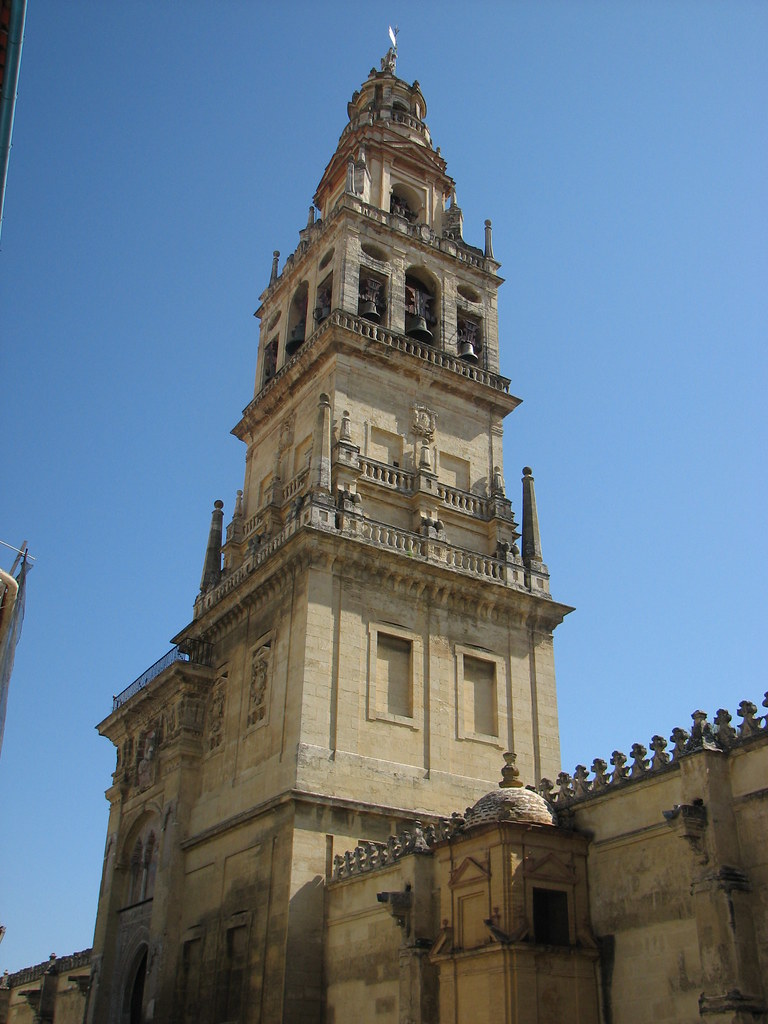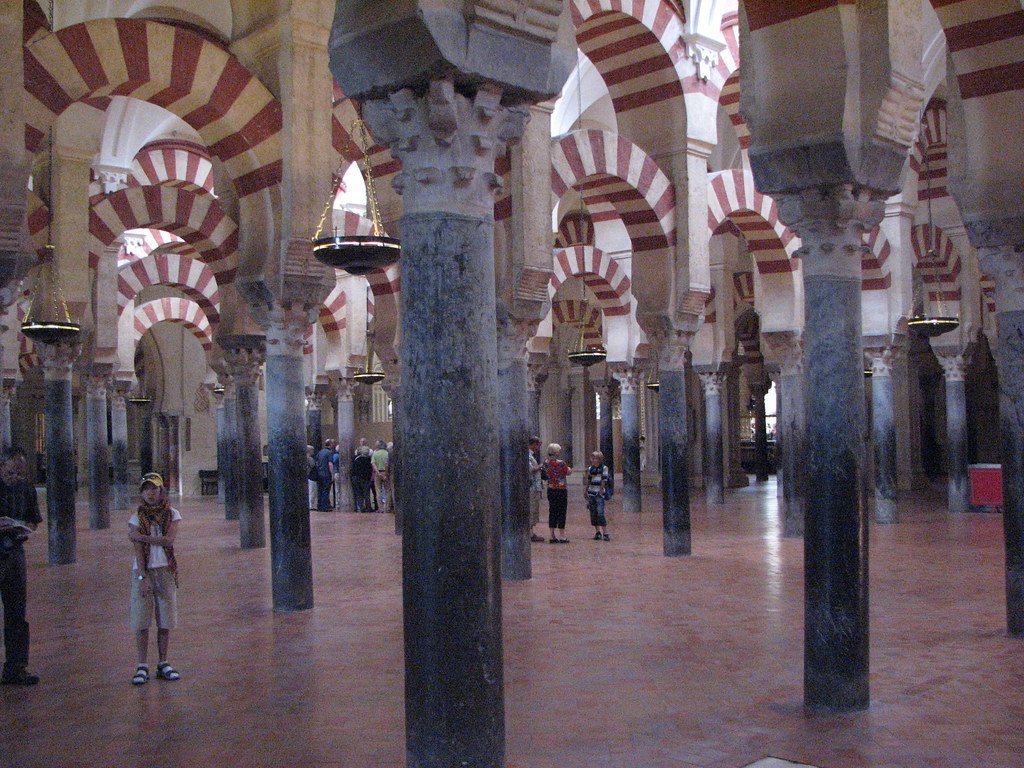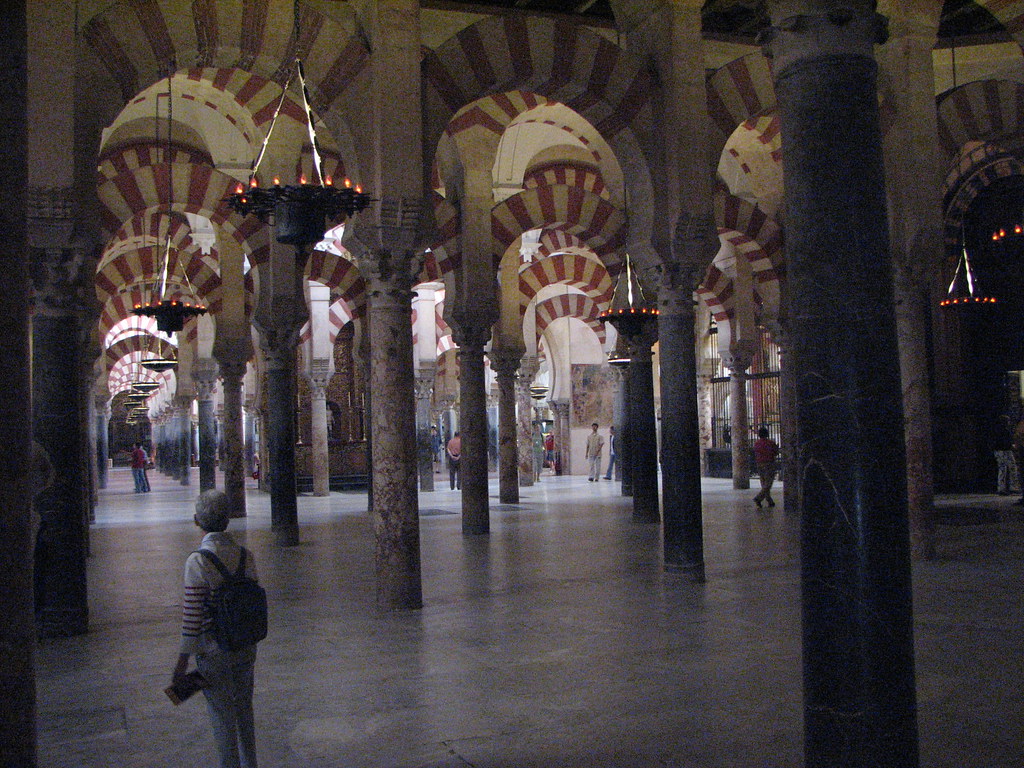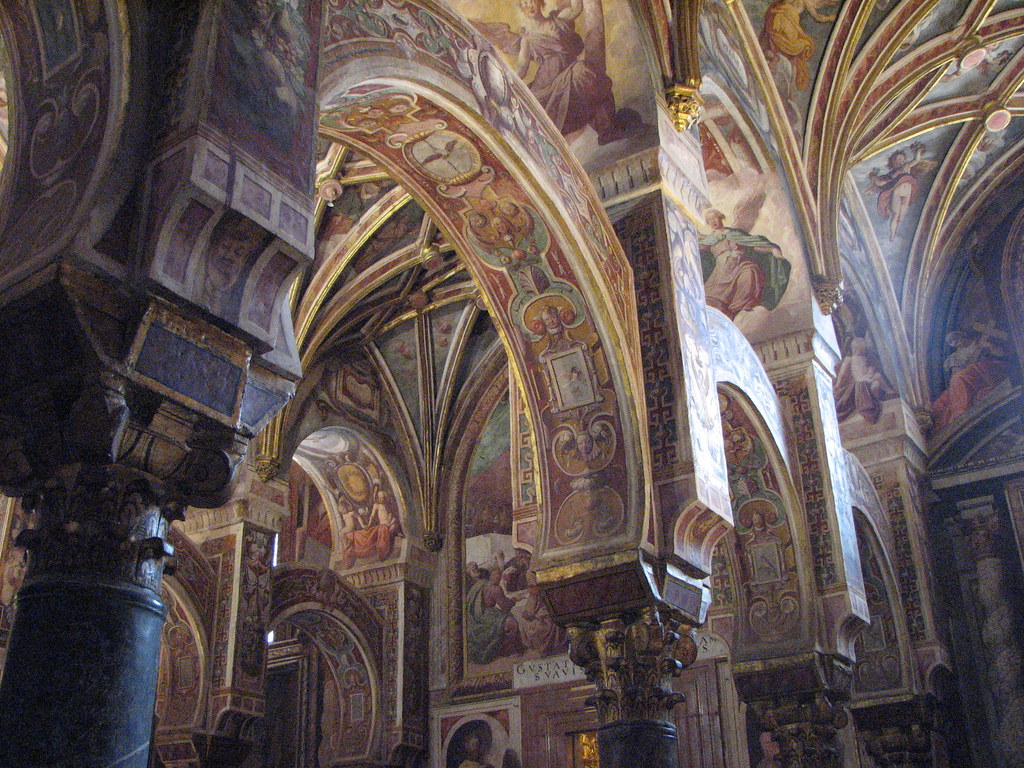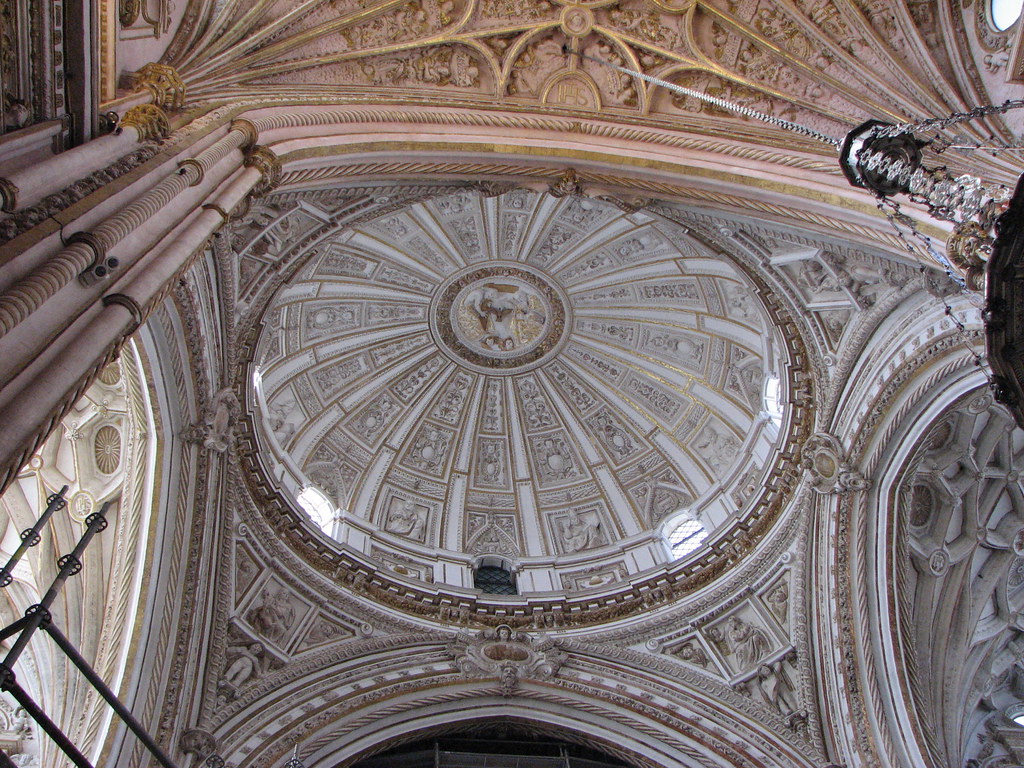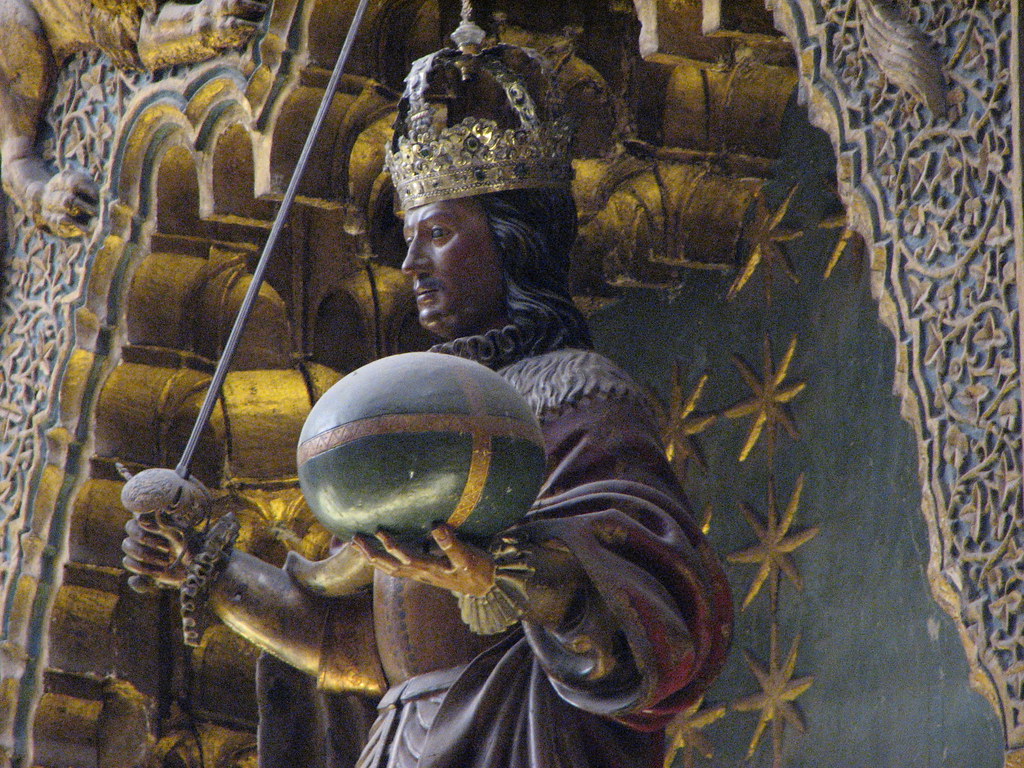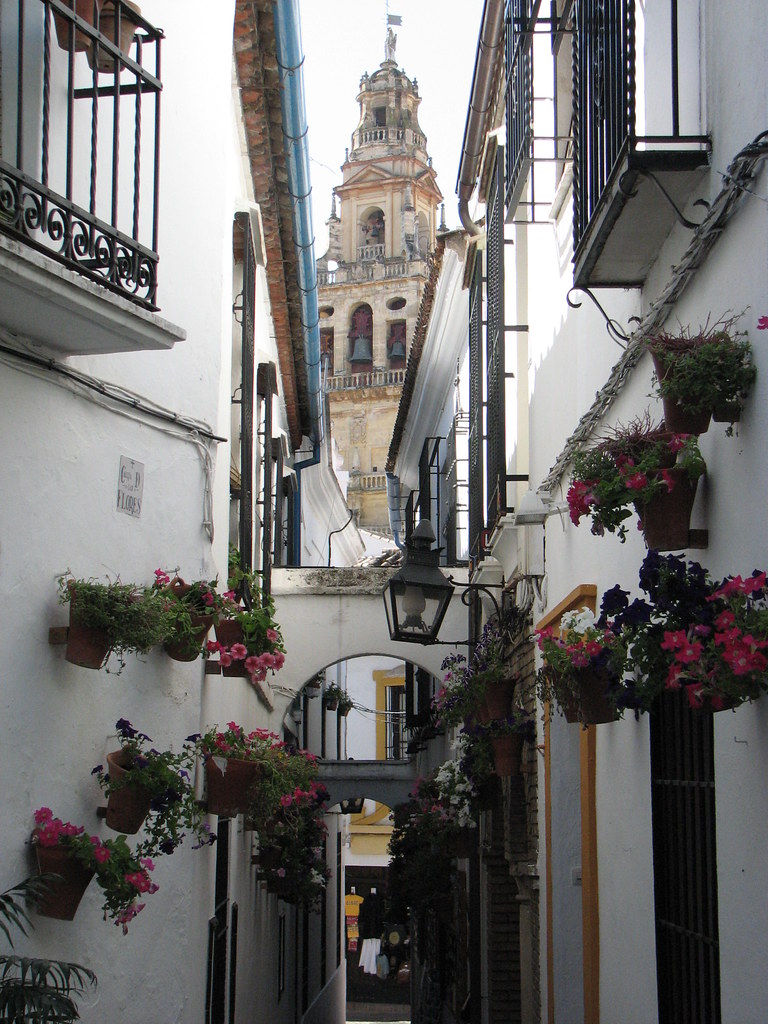Tuesday, October 07, 2008
Cordoba diary: "The Mosque"
Rome burns, and here I am fiddling around Spain seeing the sights and drinking too much wine. Oh well.
Yesterday we saw the Cathedral in Cordoba, known as the "Mosque." It is one of the most fascinating buildings I have ever been in.
The "Mosque" is the massive central mosque at the capital of the Caliphate when its seat was Cordoba (roughly the 8th to the 11th centuries, if memory serves) and thereafter until it was reconquered. When Cordoba finally fell to Christians in the 13th century, a cathedral was built inside the mosque's massive building, and there it has been for more than 700 years. The entire footprint is around 220,000 square feet, and at its peak it could hold around 40,000 sons of Allah for Friday prayers. It contained more than 1000 stone pillars, so it was known as the "stone forest." The cathedral on the inside displaced around 150 pillars, bringing the modern number down to around 850, but the impact is still staggering. Pictures follow, and there are additional descriptions embedded in some of them.
Here is one side of the massive building, the southern wall.
The cathedral's tower, which was actually built around the mosque's minaret.
Some of the 850 stone pillars that remain. These are of original Arab construction; others were recycled pillars from Roman or Visigoth buildings.
Here is a section redone with Christian imagery. This bit is not actually part of the cathedral, but rather a chapel that is considered a local parish for administrative purposes.
The mixture of Christian Gothic and 9th century Arabian architecture is really weird. Here is the cathedral's dome at the heart of the building:
A view of the tower/minaret from the courtyard. The orange trees were a Christian introduction.
10 Comments:
By , at Tue Oct 07, 06:03:00 AM:
When I see photographs of places like that I am reminded of this exchange from the movie "National Treasure"
Powell: [referring to the underground staircase] How do a bunch of guys with hand tools build all this?
Ben Gates: Same way they built the pyramids - and the Great Wall of China.
Riley Poole: Yeah... the aliens helped them.
It does seem kind of impossible that it was put together without a single tool from Sears. Architecture is often the only reference we have to understand ancient cultures and Spain, due it lack of WW1 and WW2 has a significant amount of incredible buildings.
By Dawnfire82, at Tue Oct 07, 07:54:00 AM:
But there was the nasty Spanish Civil War in between those... (commies on one side, fascists on the other... ick) Did that not do too much damage?
By , at Tue Oct 07, 09:38:00 AM:
Nothing on the scale of the Blitz on London or the destruction of Dresden. My cousin was stationed in Germany during and my aunt visited him. As they drove around he pointed out to her the places that had been flattened by the Army Air Corps during WWII. Spain suffered some horrible destruction during their Civil War (see "Guernica" by Pablo Picasso) but France, Italy, England, Germany, Poland and others had huge areas of massive destruction.
By , at Tue Oct 07, 09:41:00 AM:
The Mosque is incredibly cool--the second best site in Southern Spain. You'll see the top one next in Grenada--The Alhambra is truly a magical place. No trip to Seville?
Ken G.
By TigerHawk, at Tue Oct 07, 11:12:00 AM:
Thursday and Friday in Seville, then home.
By , at Tue Oct 07, 11:49:00 AM:
After the conquest of the Iberian peninsula by Muslim forces, it took the indigenous Christian population nearly 800 years to expell them. It must be heartbreaking for Spanish patriots to see the current Spanish government welcoming the conquerors back into the country and doing everything it can to squelch nationalist impulses.
By Gordon Smith, at Tue Oct 07, 12:20:00 PM:
Gorgeous, TH.
Thanks for all the great pics.
By , at Tue Oct 07, 03:36:00 PM:
Small quibble about 'Arab construction'. I think it's actually 'Berber construction', in the style still preserved in Northern Africa.
By Dawnfire82, at Tue Oct 07, 03:55:00 PM:
But they spoke Arabic, not Berber. That Berber culture and language was displaced and almost entirely crushed is a dirty little secret of the Arab conquests. (there are many) Whether Berber cultural societies will be allowed to exist and publish is a mid-level social problem in Libya.
And while I'm not an expert on Middle Eastern architecture from the Middle Ages, it appears consistent with styles from the same period (interlocking geometric shapes) from as far east as Iran. It would be easier to tell if it hadn't been painted over.
By Aegon01, at Wed Oct 08, 10:15:00 PM:
"The "Mosque" is the massive central mosque at the capital of the Caliphate when its seat was Cordoba."
More specifically, it was the seat of the Umayyad Caliphate after the Abbasids overthrew (and murdered) all but one of them. This last surviving Umayyad fled Arabia in general and went to Spain, where he reestablished himself. He remained a thorn in the Abbasids' collective side for almost three centuries (as you said).
ME History is paying off!
